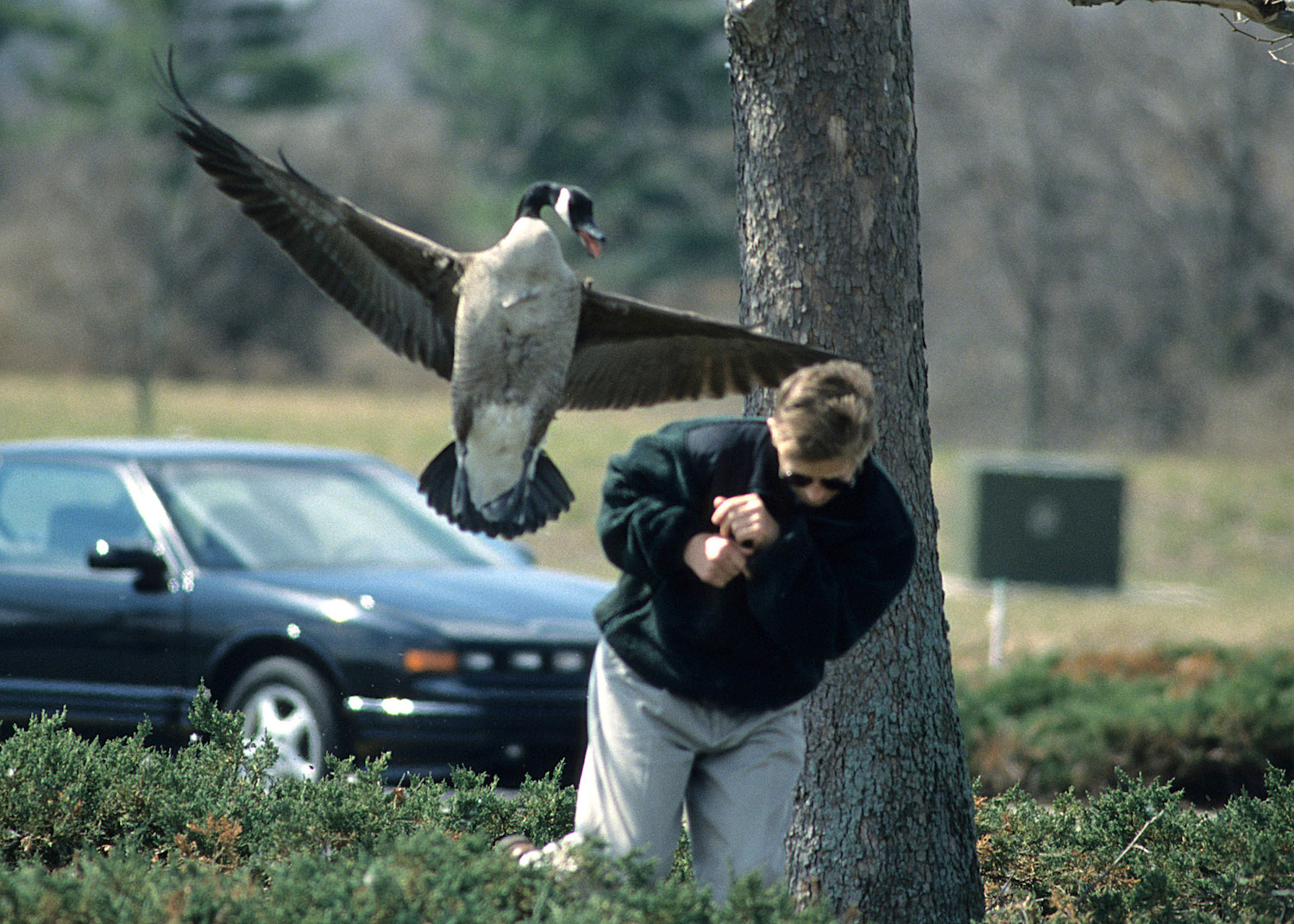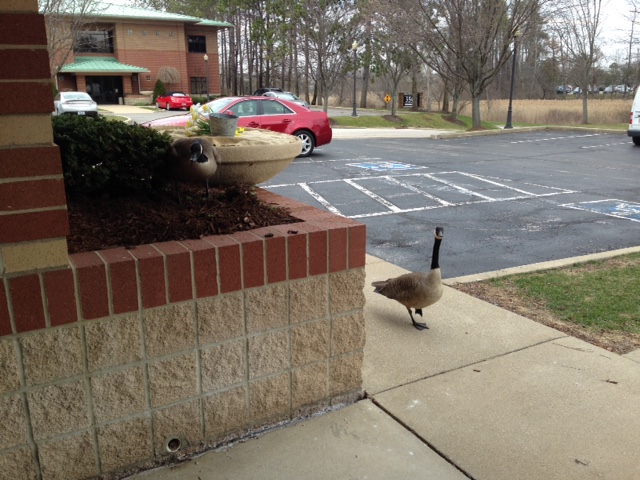Canada Geese
Solutions to Problems with Canada Geese
By Laurie Graber, wildlife research technician, ODNR Division of Wildlife
Have you experienced a goose problem in the past? If so, now is the time to prepare yourself for what is yet to come. First, you must know a little biology about the Canada goose to have a better understanding of them. Geese will group up into large flocks throughout the fall and winter, and begin to split up late winter. During the months of January through March, they begin to pair up and return to their nesting spots. The geese that were hatched last year will continue to stay in family flocks because they are not yet breeding capable and won’t be until two years of age.
You’re probably questioning the legal status of geese in the state of Ohio. Several landowners that I talk to think geese are an Endangered Species. Well, that’s not true. The ODNR Division of Wildlife holds the statutory responsibility for managing Ohio’s wildlife resources. Canada geese and all native waterfowl are protected under both the Federal Migratory Bird Treaty Act and Ohio state law. This protection extends to geese, goslings, nests, and eggs. It is illegal for any person, agency, or organization to take or attempt to take (pursue, hunt, shoot, wound, kill, trap, capture, or collect), any bird, nest, or egg outside of the regular hunting season without a special permit from the ODNR Division of Wildlife and the U.S. Fish and Wildlife Service. Non-lethal scare and hazing tactics, which do not harm the geese, are allowed. These tactics include: pyrotechnics, dogs, barriers, a grid on the pond, laser pointers, distress calls, or grape-flavored repellents such as Flight Control.
If you have had an aggressive goose nesting by the front door of your business, there are some options to help lessen the aggressiveness. The gander’s (male) job during nesting season is to defend the female, their nesting territory, and the eggs. If a person or another goose enters the territory, the gander will usually give a warning call to the intruder before chasing the intruder away. Some geese can be very aggressive and will only stop their attack when the intruder has left. By placing snow fencing around the nesting female, leaving an opening for entry to the nest, this helps to calm the male down because now he feels she is protected behind the fence from intruders. Be proactive! Block the area off prior to nesting season. Here are some main key points on what to do if a goose starts to attack: Maintain direct eye contact and keep your chest and face pointed at the goose. If the goose acts aggressively, calmly and slowly back away, watching for obstacles. *Maintain a neutral demeanor, i.e., do not act hostile or show fear.

Download the Ohio Division of Wildlife's General/Residential Harassment Techniques Timeline
DO NOT FEED GEESE Geese that are fed will lose their fear of humans and attack adults, children, and pets during the nesting season (March through June). Feeding bread, corn, potato chips, popcorn, and other human food items harms the geese and sets the scene for goose attacks on people. Feeding geese can also cause harm to them. Young geese that are not eating natural food will not gain the nutrition they need to develop correctly, and potentially can form Angel Wing as seen in the photo.


For more information about wildlife in Ohio go to wildohio.gov.